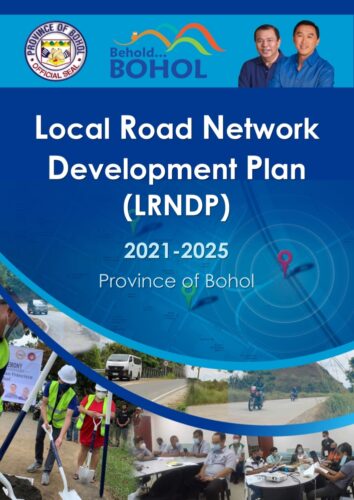Accessibility plays an important function in the development of a locality. Providing safe, secure, and comprehensive road network to the community increases productivity of the population, generates more economic activities and enhances the general welfare and living condition of the residents. It had been a known contributing factor in the transformation of communities from laid back to more progressive ones. However, the sustainability of this vital infrastructure must be aggressively looked into in order to break the vicious cycle of construction and poor maintenance.
The road network in the Province of Bohol greatly improved with the implementation of the 2018-2022 Local Road Network Development Plan (LRNDP). The upgraded accessibility resulted in the continued growth of the local economy and the improvement in the standard of living of the Boholanos. It has also assured the sustainability of the development occurring in the province, especially in the areas of ecotourism and agro-industries.
The updating of the LRNDP went through a participatory process. It involved the sectors that are concerned with Local Road Management (LRM) as well as those in the areas of Planning and budgeting; Procurement; Public Financial Management; Revenue Generation; HRD; Internal Audit; DRRM-CCA and Environmental Sustainability; and, Road Safety. Participants to the updating of the Bohol LRNDP were municipal/city engineers, national government agencies (NGAs) representatives, civil society organizations (CSOs) representatives of Holy Name University, Bohol Island State University, University of Bohol, and BIT International College, and representatives of the three districts of the Department of Public Works and Highways (DPWH)-Bohol.
In the updating of the LRNDP, a set of criteria was used in the prioritization of local road section. These include: a) Impact on the Economy, b) Environmental Consideration, c) Physical Aspect of the Road, and e) Social and Legal Concerns. The Provincial Government of Bohol (PGBh) has identified 94 core roads for investment programming, which is 60% of the total number of provincial road sections (PMD 1 = 33; PMD 2 = 25; and, PMD 3 = 36). Also, the 47 municipal LGUs and the City of Tagbilaran have identified their prioritized local core roads.

